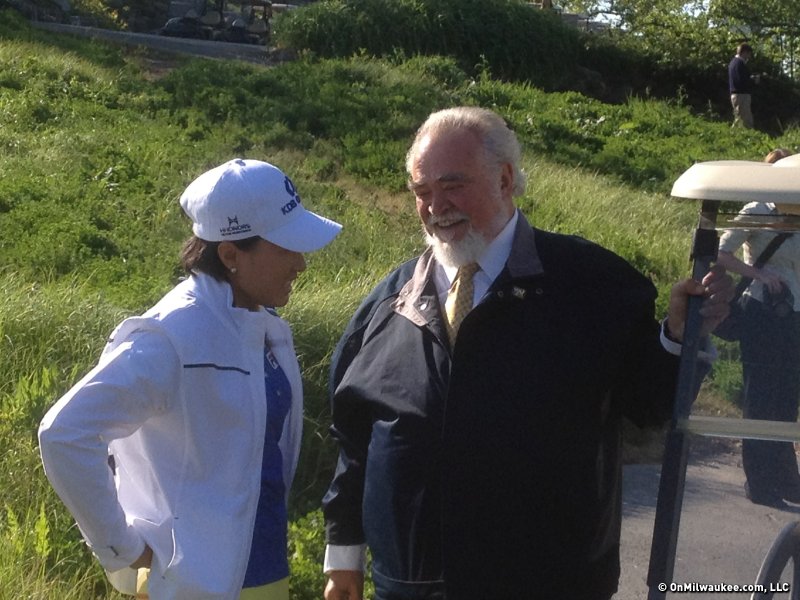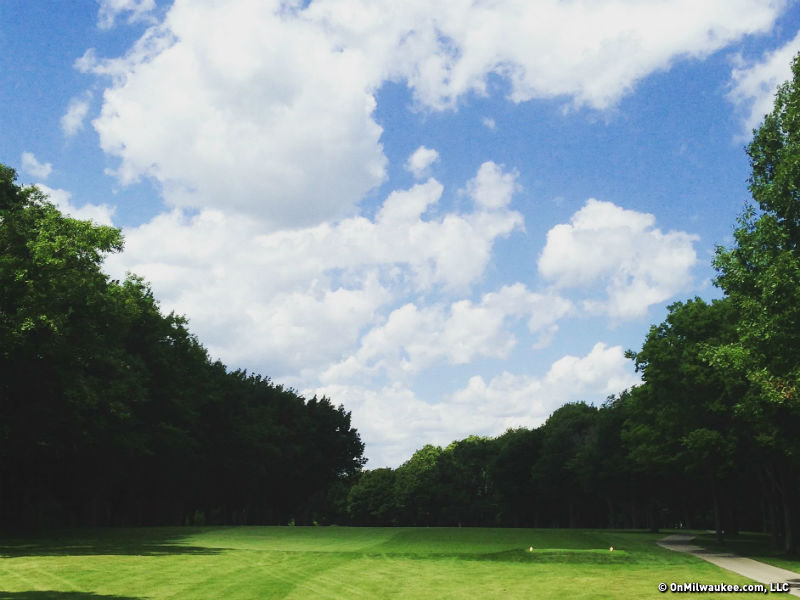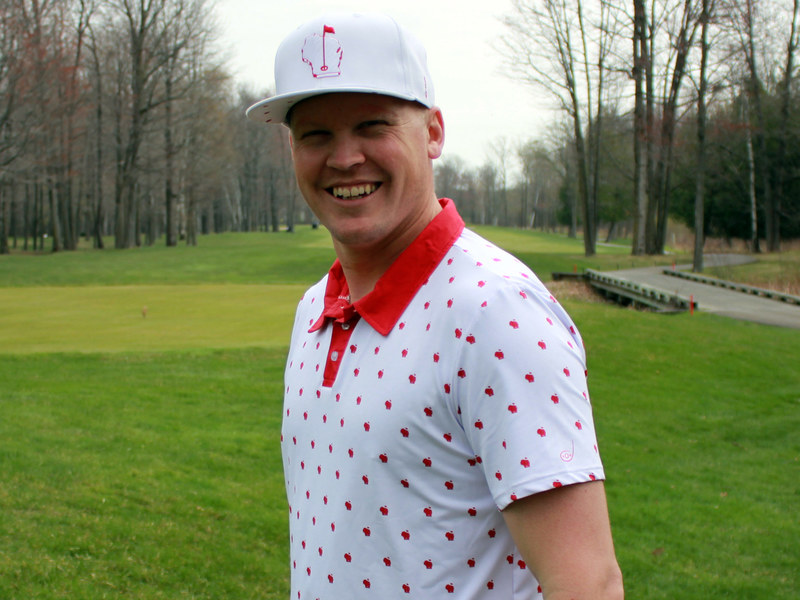SHEBOYGAN – At one point in the not too distant past, Blackwolf Run had suddenly been turned to a mud pit of a golf course.
A massive rainstorm had washed away much of the sixth green and fairway architect Pete Dye was re-shaping in advance of the 1998 U.S. Women's Open, leaving Dye and his crew to commiserate in a barn on the property.
In the distance, Dye saw a vehicle approaching. A Jaguar was maneuvering its way through the slop. Still in a full suit, Herb Kohler stepped out into the quagmire, dress shoes and all.
"I said 'Oh God' this is going to be the end of me forever," Dye remembered. "He looked around and the words came out, 'When do you people plan to get back to work?' So, we built the damn thing for a second time."
Just as Kohler stood tall and stable in the muck, Se Ri Pak did the same a little over a year later. She was made sure her footing didn't betray her when on the final regulation hole of an 18-hole playoff with amateur Jenny Chuasiriporn, she went barefoot into a water hazard to keep the tournament going and emerged three holes later as champion.
Fast forward to Tuesday, during the 2012 U.S. Women's Open media day, and So Yeon Ryu couldn't help herself.
The precocious 22-year-old peeled off her socks and shoes and waded into the same hazard during a practice round.
The defending U.S. Women's Open champion had to try it.
"I always think about that shot," Ryu said with a smile. "So today, I did – I took off my shoes and then I took a picture. It was a little weird, but I love this picture."
What started with some unsteady footing turned has turned into legend, as Pak's victory in 1998 spurred a nation to take up the game, and pushed Kohler and his golf properties to new heights in major championship golf.
"It was our first one, so obviously it had a lot of weight because it started so many things," said Kohler, whose Wisconsin golf properties will have five major championships in the books once the Open is completed. "But it had more weight, because it inspired so many people. It inspired a nation, literally."
Pak's win turned South Korea on its ear, sending young girls flocking to the game.
Ryu was one of those children, just eight years old at the time.
"One of my best friends played golf, so I just wanted to hang out with my friend so that's why I started to golf," Ryu said. "But I saw the 1998 U.S. Women's Open and that looks really great. At that moment, Korea was having a really hard time and everybody really focused on Se Ri."
Now, the tournament and the women's game has expanded to levels never before seen, with a record 1,364 entries from players around the globe.
Pak's impact has been measurable as well, with fellow South Koreans Birdie Kim (2005), Inbee Park (2008), Eun-Hee Ji (2009) and Ryu all winning recent U.S. Opens.
"Se Ri played so great, so everybody had a little hope of 'I want to be a good player like Se Ri' and we practice hard," Ryu said of Pak's influence. "Some time, Se Ri announced about her childhood story about how she practiced really hard and sometimes if she has a little problem she practices more, so everybody followed Se Ri. We practice so hard.
"And actually, in Korea the practice (range) is not great. Here in America all the driving ranges are real grass and you have a chipping green and a real putting green. Actually Korea is a real small country and we have lots of golf clubs and we have lots of golf players but our practice (ranges) are not very good. But if we come to the LPGA Tour the practice (ranges) are so great so if we practice a lot here our golf improves."
In six weeks, golf fans in Wisconsin and around the world will see just how much the women's game – and Blackwolf Run – have improved. And both couldn't be on more solid ground.







